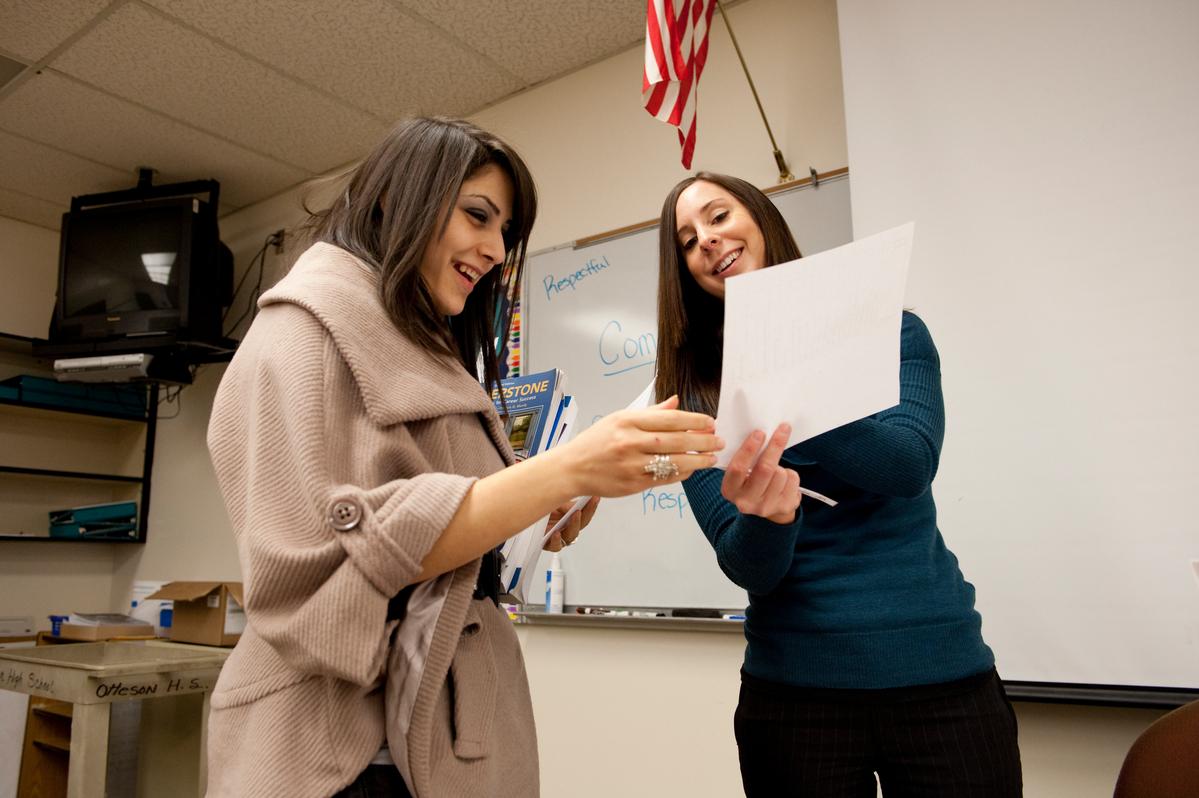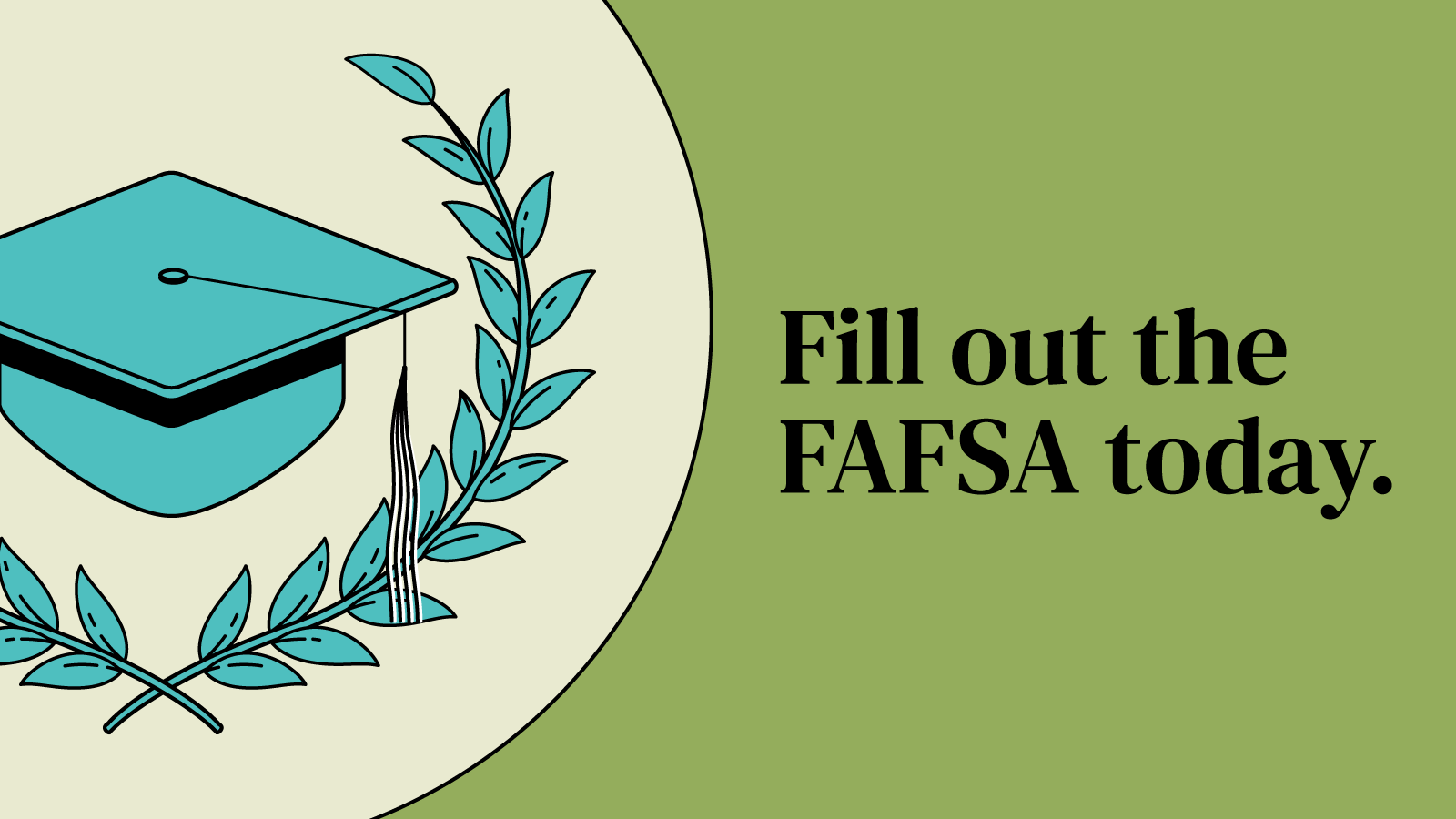Director’s Note
As many of you know, my son is a senior in high school, so I’ve been living the experience of helping him navigate toward a postsecondary pathway. We recently attended an Open House at Seattle Central College last week and I left with so much hope. We felt the incredible energy of the current students and staff as they engaged with prospective students. I was also thrilled to hear that their enrollment numbers are trending upward, which you can read more about below.
I also just returned after a quick trip to Denver to visit a few charter schools, as I recently became director of not just the Washington state team but our foundation’s work to support high-quality charter schools in the state and across the U.S. In addition to seeing a healthy charter sector in action, I learned more about the tech-forward college and career advising practices they’re using that provide students and staff with timely and clear navigational information. I even left one school with the unexpected, soul filling surprise of three hugs and a drawing from early learning students. #winning
Like many families exploring postsecondary right now, we have many questions about my son’s next steps. A new Gates Foundation-funded survey of young people helps bring some of these questions to life. It’s so important that we continue to listen to students to understand their goals and what we collectively need to do so they can get there. Scroll down to read more about these student views below.
Angela Jones
Director, Washington State and U.S. Charters
New research highlights student views on college

Nearly 90% of high schoolers say they want to pursue more education after graduation, but only 50% enroll in postsecondary programs that can set them on a path toward the future they want. Why does that gap exist?
- The Gates Foundation funded national research to explore students’ answers to that question.
- HCM Strategists and EDGE Research conducted focus groups and surveyed nearly 5,000 young people across the U.S. to understand their views on college – including why some high school graduates didn’t enroll.
What they found: Students shared that they still value college, but they have concerns about cost and want more flexible paths to demonstrate their skills.
- High schoolers would like more access to experts to help them understand the financial aid process, explore careers, and navigate the college experience.
Explore the research: What new research tells us about students' views on college
New findings provide insights on advising in WA state

When it comes to helping students design their own futures, we know that access to advisors works—especially for students who face more significant barriers in their education journeys.
- In fact, 74% of students with parents who don’t have college degrees attended a postsecondary institution if they had met with a counselor in high school, compared to just 49% of those who did not.
So, we have to ask the question: how is Washington state doing when it comes to connecting students to college and career advisors?
- New analysis from social impact nonprofit Kinetic West explored this question.
What Kinetic West learned: Most schools and districts in Washington have a vision for college and career success, but advising is often inconsistently implemented.
- Rural communities lack access to community-based organizations that can provide additional support.
- There isn’t a consistent approach to advising across school districts, and some schools feel left out of district-wide efforts.
- Schools also lack access to online platforms to track a student’s progress.
Why it matters: As highlighted in the survey we linked to above, students want more access to mentors and experts who can help them prepare for life after high school.
- Consistent, quality advising can make a big difference for students.
- We need to ensure all students have access to this kind of support, not just a lucky few.
Learn more: New findings on college and career advising provide insights for Washington
Spread the news about FAFSA

While the FAFSA rollout has presented several challenges, the U.S. Department of Education has addressed many of the glitches.
- It's crucial that students and their families fill out the FAFSA as soon as possible to unlock financial aid for the upcoming school year. Their future is just one form away.
- Most colleges in Washington state have extended their decision date to June 1 to give students more time to review admission offers and financial aid packages.
It’s time to spread the word.
- Gates Foundation partners created an unbranded social media toolkit that includes links to a handful of useful resources, graphics, and sample social media text.
- Everyone is welcome to customize and share these graphics with their own networks.
As of March 8, only 25% of Washington state seniors had completed the FAFSA.
- That’s below the national average of 31%
- We all need to do everything we can to help students navigate financial aid opportunities this year.
Download the toolkit: #FillOutTheFAFSA Social Media Toolkit
Postsecondary enrollment bright spots in WA

You’ve probably already heard that nearly 70% of all jobs in Washington state require some education after high school.
- But did you know: Washington ranks among the top five states with the largest share of jobs requiring postsecondary education? The Washington Roundtable highlighted this in a recent brief.
While our state isn’t currently meeting this demand – just 50% of high school graduates today enroll in a postsecondary program – we saw a few bright spots this fall.
- The Washington Student Achievement Council (WSAC) reported community and technical college (CTC) enrollment was up 5% year over year.
- According to the Washington Roundtable, the number of Black students enrolling in college has increased by 2.3% since the pandemic’s onset.
Why it matters: These are welcome signs. Still, we have more work to do to ensure all young people can pursue an education after high school.
- As WSAC noted, about 40,000 fewer students enrolled in public four-year colleges and CTCs this fall than in 2019, prior to the pandemic.
Learn more: Washington Public Enrollment Trends
______________
De-jargon-ize it: Postsecondary
We like to use some confusing words, jargon, and acronyms in education, which is why we just love this new comic series from Washington STEM.
- In this edition, they tackle the word postsecondary.
- As Washington STEM highlights, we use this word to describe any kind of education after high school.
View the comic: De-jargon-ize It: “Postsecondary”
What We're Reading
- Close gap between promise and reality of dual-credit courses, The Seattle Times
- What superintendents agree is the greatest barrier to progress in 2024, District Administration
Read Next



